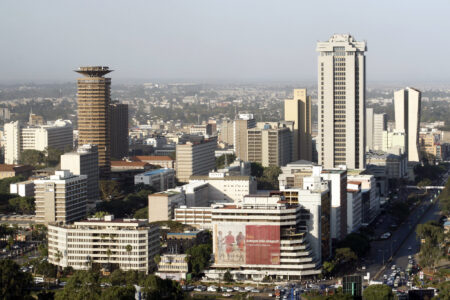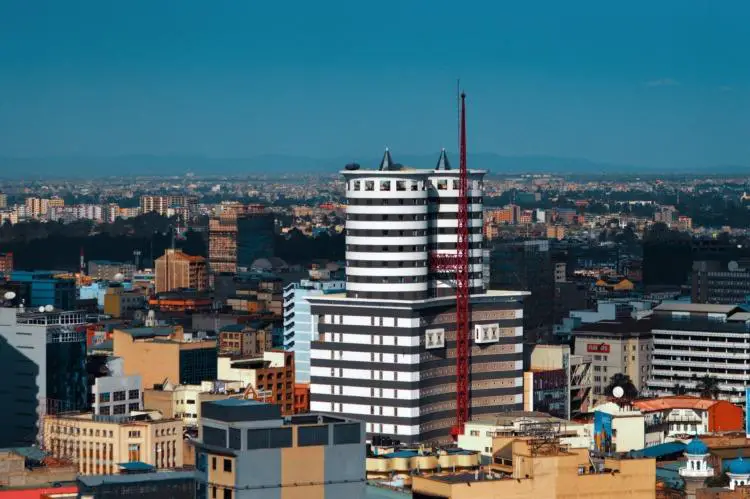- Africa’s new dawn: the rising role of digital and AI in agriculture
- Can Dangote Refinery Transform Africa Energy Ambition
- Gallup Survey: 80 per cent of Kenyan Workers Are Disengaged and Seek New Opportunities
- Madagascar Man Freed from 5KG Tumor After 15-Year Struggle
- How women in Africa are perceived and treated
- Sugar consumption in Kenya to Increase to 1.23 Million Tonnes
- Can Somalia and Turkey Oil deal Bring Change in Somaliland
- Remittances to Kenya dropped to $371.6 million in June, marking a six month low
Browsing: Purchasing Managers’ Index™
- Kenya’s business conditions weakened slightly in March despite easing inflation.
- Kenyan firms reduced their purchases of inputs in line with weaker sales.
- Most businesses remain optimistic about their workforce size and revenue growth in the year’s second quarter (April-June).
The latest Stanbic Bank Kenya Purchasing Managers’ Index indicates that Kenya’s business conditions weakened slightly in March despite easing inflation.
The deterioration in operating conditions was witnessed across the private sector as order book volumes and output levels contracted. The downturn contrasted with February, which saw an improvement in the private sector for the first time in six months.
Despite the decline, the survey data provided some positive signals for Kenyan businesses. Staffing and inventories showed further growth, indicating potential expansion opportunities.
Additionally, input cost inflation slowed to its lowest level in over three years amid a recovery in the shilling against the US dollar and other major currencies, including those …
- High inflation due to rising fuel and food costs hurt business confidence in April.
- Stanbic Bank’s Purchasing Manager Index (PMI) shows output and new orders declined sharply.
- Downturn was led by manufacturing and services, contrasting with expansions in agriculture, construction, wholesale and retail.
Kenya’s business confidence dipped to the lowest levels on record in April, the latest PMI survey shows. During the period, high inflation and political unrest led to a sharp fall in customer demand ruffling business confidence.
Activity levels and input purchases also fell sharply, but employment numbers continued to rise, the Purchasing Managers’ Index indicates. On a positive note, input cost pressures showed further signs of having peaked, dropping to their lowest recorded in 2023 so far, though remaining steep.
The headline figure derived from the survey by Stanbic Bank Kenya is the PMI. Readings above 50 signal an improvement in business conditions on the previous month, …
The index pointed to a solid improvement in the health of the private sector economy, helped by a recovery in business activity as Covid-19 cases continued to fall across the country.
New business levels at Kenyan companies rose sharply in February, as survey panellists commented on a rebound in customer demand and increased marketing efforts.
The rate of growth was the second-fastest since October 2020.
Export sales rose to a much greater extent than in January, but growth remained weaker than seen in the fourth quarter of last year.…
The index signalled a solid decline in operating conditions, albeit one that was slower than those seen in April 2021 and during the second quarter of 2020.
“Economic activity started 2022 on a subdued note as evidenced by the Stanbic PMI reading that fell to the lowest level in nine months. The reading was below 50 which indicated a deterioration in business conditions from December,” Kuria Kamau, Fixed Income and Currency Strategist at Stanbic Bank commented.
While export demand grew marginally, domestic demand fell significantly as client spending was negatively affected by rising inflation and a resurgence in Covid-19 due to the Omicron variant, he noted.…
- Kenya’s headline figure climbed to 51.4 in October, from 50.4 in September.
- Readings above 50.0 signal an improvement in business conditions on the previous month.
- The increase was largely driven by the normalization of business spending following pandemic-related measures.
The Kenya Purchasing Managers’ Index ticked higher in October, as output growth strengthened for the first time in five months and new business continued to grow.
According to the Markit Stanbic Bank Kenya survey, the country’s headline figure climbed to 51.4 in October, from 50.4 in September.
Readings above 50.0 signal an improvement in business conditions on the previous month, while readings below 50.0 show a deterioration.
During the period, new business volumes continued to rise, extending the current run of growth that began in May.
For the first time in five months, the seasonally adjusted Output Index ticked higher in October, thus signalling a faster expansion in Kenyan business activity.…
Many firms cited issues with money circulation in the economy which had a notable impact on activity levels.…










